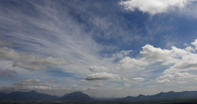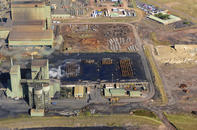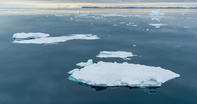Change is Inevitable
The shifts in climate which we’ve seen in recent decades will continue into the future and, in most cases, escalate. The Intergovernmental Panel on Climate Change (IPCC) says we can anticipate a warming of about 0.2°C per decade for the next 20 years.

“Even if the concentrations of all greenhouse gases and aerosols had been kept constant at year 2000 levels, a further warming of about 0.1°C per decade would be expected,” the Working Group One summary states.
Due to the inertia in the climate-atmosphere system, and the lag between heated air and the oceans we’re already locked in to a certain amount of change. The foot is on the accelerator and even if we take it off now, the car will keep rolling one forward because of the momentum it has gained over the past 250 years.
Predictions are Conservative

But if we carry on as we are now, increasing the amount of emissions that we’re pumping up into the skies, the changes we will see in the climatic system during the next century will be “larger than those witnessed during the 20th Century”. Something else worth remembering: the 2007 IPCC predictions are generally regarded as conservative.
When the final IPCC reports were drawn up, the scientists received so much pressure from politicians that they were forced to tone down the severity of their findings for the 2007 Fourth Assessment Report. Bottom line: the worst case scenario produced by the science has not been included in the summaries listed below.
Temperature

The mercury will continue to climb, but predicting by how much depends on: a) Whether we continue “business as usual”, meaning that greenhouse gas concentrations continue to rise as they have been, or if we are able to stabilise these emissions; b) Whether we can develop more sophisticated climate models.
A summary of six different IPCC models, used to estimate the average surface warming under different scenarios, anticipates warming from 1.1°C to 2.9°C on the low end or as much as 2.4°C to 6.4°C on the high end by the last two decades of this century, relative to temperatures between 1960 and 1990.
Sea Level
By the end of this century we’ll be measuring sea level rise in metres, not millimetres, and this will be anything from 0.18 m to 0.59 m. Even this is regarded as a conservative estimate because scientists don’t know how fast the Greenland ice cap will melt. If Greenland and the West Antarctic Ice Sheet go, the rise will be astronomical. How far inland a half-metre rise in sea level will push, depends on the steepness of the land in any given area and storm severity that drives water inland.Meltdown and Weather Extremes

Snow cover, Arctic and Antarctic sea ice, glaciers and permafrost will continue to melt and shrink. The Arctic may be completely ice-free during summer times by the end of this century. Rain, snow or hail events and heat waves with increase in frequency and intensity; typhoons and hurricanes will bring higher wind speeds and greater inundations of rain.
Wetter or drier? According to the models, some places will get drier, including subtropical land regions; others wetter, such as the high latitudes. One IPCC model puts this subtropical decrease at 20 percent by the end of this century.